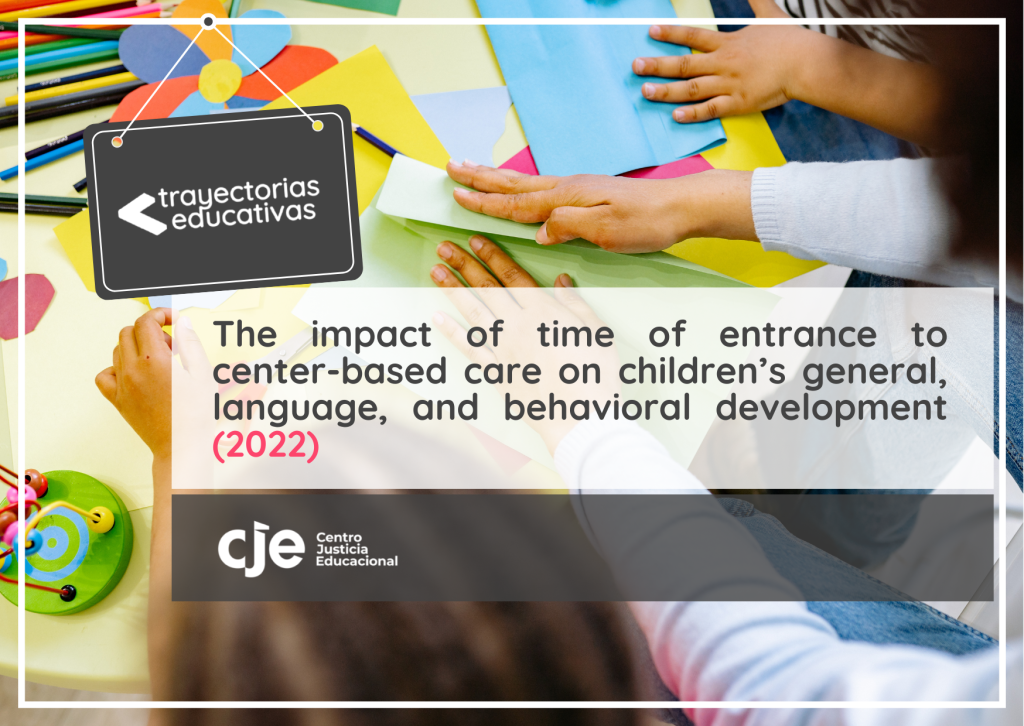AUTORES: Narea, Marigen, Cumsille, Patricio, & Allel, Kasim.
AÑO DE PUBLICACIÓN: Abril 2022
INSTITUCIÓN: CJE
DISPONIBLE EN:
RESUMEN:
There are contrasting results of the association between center-based care attendance and child development, mainly related to how the time of entry and permanence in the program relates to developmental outcomes. Using latent class analysis in a nationally representative sample of Chilean children between 6 and 35 months old (n = 3,992), and controlling for the child’s age, maternal education, mother’s marital status, and household income, we identify three different timings of entrance in center-based care programs. The three timings of entrance were defined as early-entry (16%), those children who are more likely to enter before they are 6 months old; middle-entry (16%), those who are more likely to enter when they are between 6 and 18 months old; and late-entry (68%), those children with a low probability of enrollment any time before they are 35 months old. We found that children from the early- and middle-entry classes had higher language development when compared with children from the late-entry class. Still, only those from the middle-entry class showed higher general development in the Battelle test. In contrast, children in the early- and middle-entry classes presented higher scores in the Child Behavior Checklist’s externalizing behavior scale than children in the late-entry class. Our findings highlight the existence of a likely linkage between the timing of entry to center-based care and child development. It is essential to understand the potential advantages of center-based care in younger children, especially in enhancing their vocabulary and general development, and the potential negative association of early-entry with problematic behavior.



